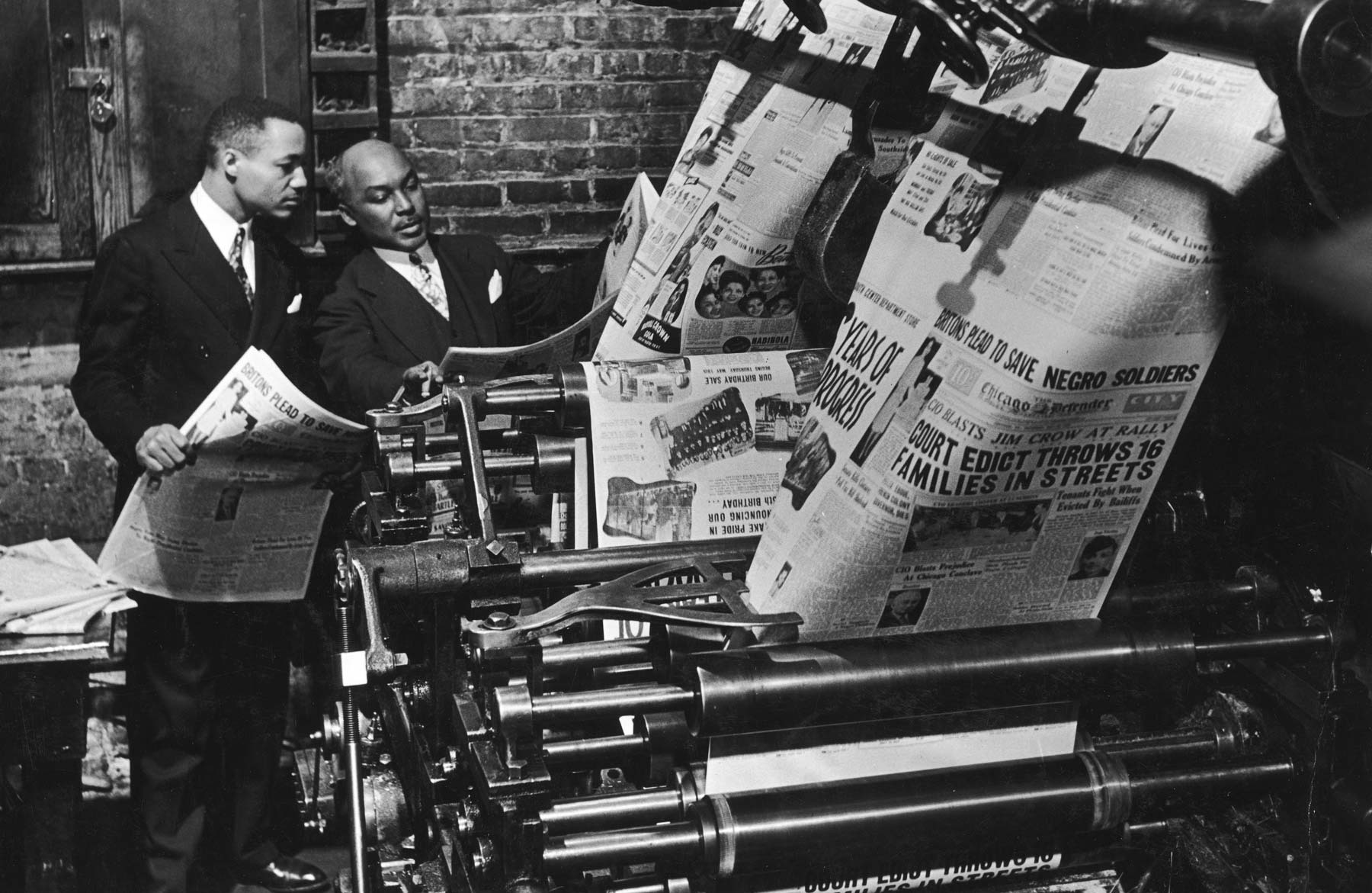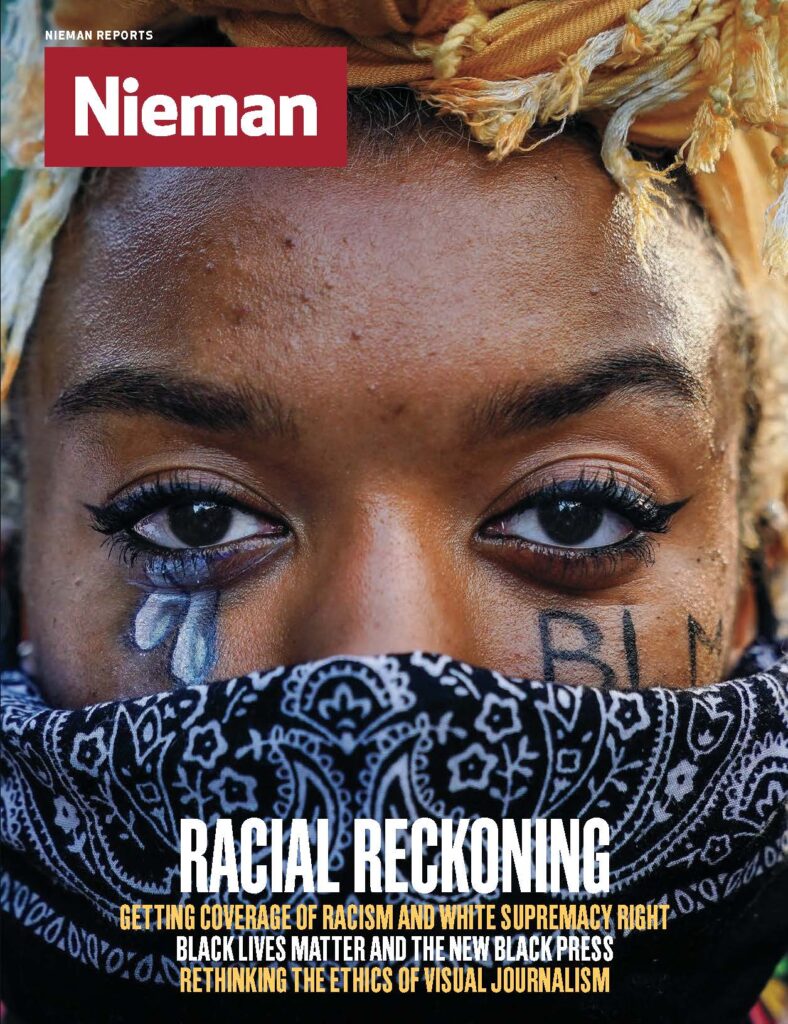
As the coronavirus pandemic wears on and the racial justice movement in the U.S. continues to amplify in the wake of George Floyd’s killing, American society — and American newsrooms — are faced with urgent challenges as well as opportunities for change.
How are news organizations covering this unprecedented time, and how are journalists managing the trauma and stress associated with that work? Nieman Reports examines how the reinvigorated movement for racial justice and the pandemic are prompting newsrooms to fundamentally rethink how stories are covered — and by whom.
The Black press has powered political action and lifted spirits as it chronicled achievements, aspirations, and challenges. Such was its power that some Southern towns banned the sale of Black papers in an effort to stem the Great Migration. Coverage of the civil rights movement provided crucial information and inspiration. The 4 million images from Jet and Ebony magazines — among them Jackie Robinson, Martin Luther King Jr., and Diana Ross — donated to the Smithsonian are also a testament to the place of the Black press in American life.
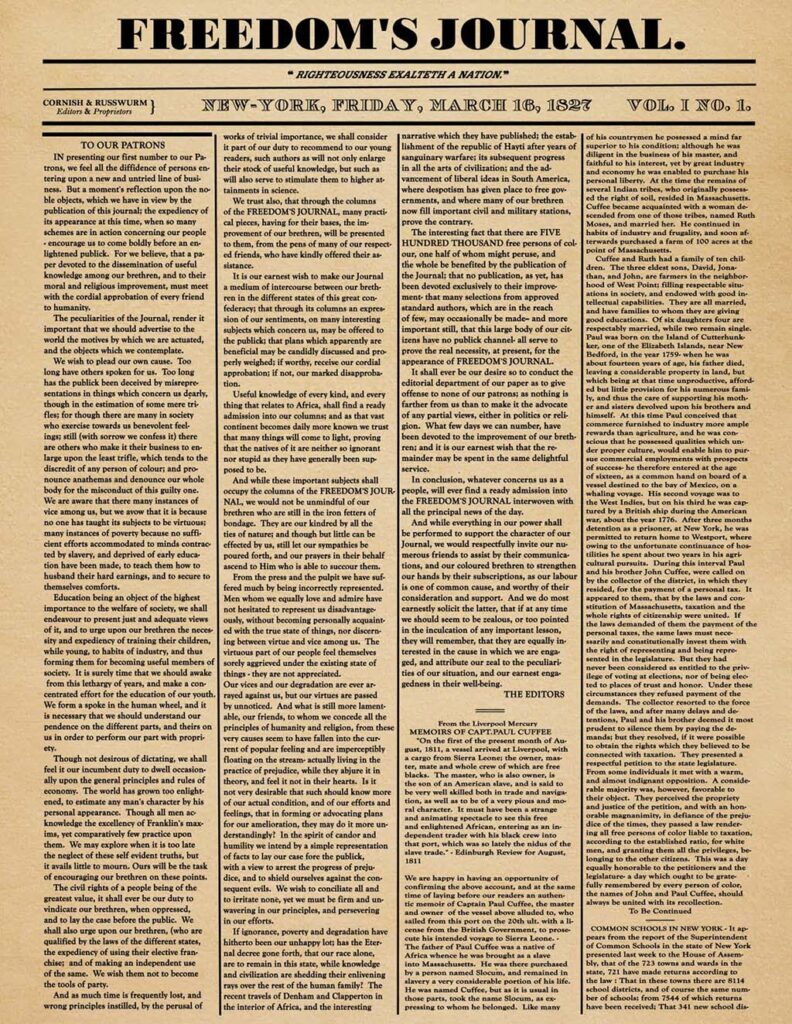
Freedom’s Journal, 1827
The first black-owned and operated newspaper in the U.S., established the same year slavery was abolished in New York. The weekly published editorials about slavery, biographies of renowned black figures, and pieces advocating for Black people’s political and social rights. “We want to plead our own case,” wrote publishers John B. Russwurm and Samuel Cornish. “Too long have others spoken for us.”
The North Star, 1847
Frederick Douglass and Martin Delany were the founders and editors. Published in Rochester, New York, their paper advocated for the abolition of enslavement and covered politics in Europe, as well as literature and culture. Its slogan was “Right is of no Sex—Truth is of no Color—God is the Father of us all, and all we are Brethren.”
The Christian Recorder, 1852
The official organ of the African Methodist Episcopal Church, this weekly expanded its purview through the years to not only cover church news but politics and other news. An “Information Wanted” column published notices from individuals seeking missing family members, many of whom had been separated by the Civil War or by being sold to another slave owner.
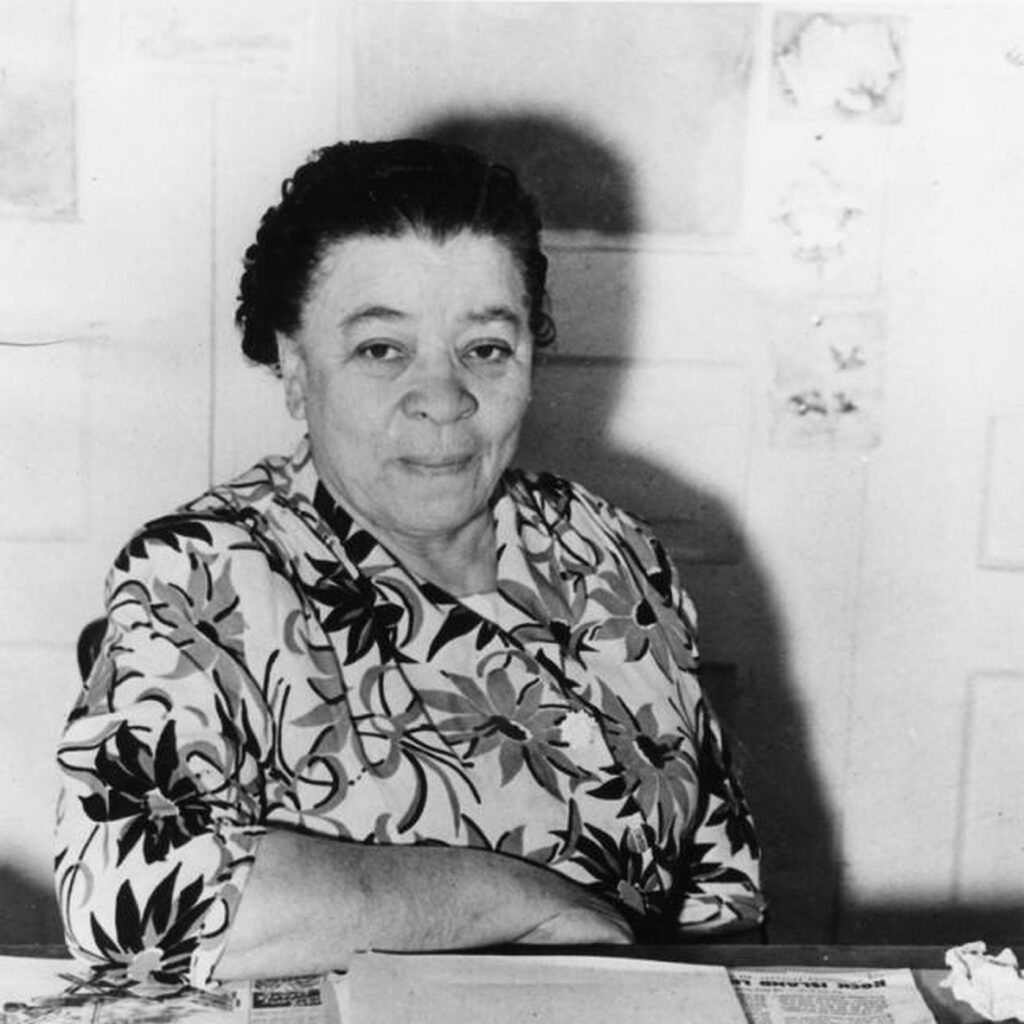
The California Eagle, 1879
Upon the death of founder John J. Neimore, Charlotta Bass become owner and publisher of the Los Angeles-based paper in 1912, making her likely the first female African-American newspaper publisher in the U.S. She established an activist tradition with a crusade against D.W. Griffith’s film “The Birth of a Nation.” The Eagle also advocated for an end to segregation in housing, jobs, and transportation.
Philadelphia Tribune, 1884
The oldest continuously published African-American newspaper in the U.S. At one time, it competed against four other African-American papers in Philadelphia. Called the city’s “chief news-sheet” by W.E.B. Du Bois, it sought to improve the standard of living for its readers, reporting on unfair business practices by white businesses and raising funds to end school segregation in the city.
Memphis Free Speech & Headlight, 1888
Founded by the Reverend Taylor Nightingale, this paper is where co-owner and editor Ida B. Wells established herself as an anti-lynching crusader. After Wells in 1892 wrote an editorial expressing skepticism for public justifications of lynchings (such as to “protect white womanhood”), white newspapers called for retaliation and a mob destroyed the newspaper office. In response, Wells published “Southern Horrors,” her groundbreaking investigation of lynching in the U.S.
Related Reading
Meet the New Black Press
By Deborah Douglas
Baltimore Afro-American, 1892
The longest-running African-American family-owned paper in the U.S., it rose to national prominence under editor Carl J. Murphy starting in 1922. In 1941, Vincent Tubbs — who later was one of the few black war correspondents during World War II and the managing editor of Jet magazine — was assigned to cover lynchings, often traveling to remote locations in the South.
Chicago Defender, 1905
The nation’s leading African American newspaper of its time, with contributors including Langston Hughes, Ethel Payne, Gwendolyn Brooks, and Ida B. Wells, the Defender helped spur the Great Migration – the mass exodus of African Americans from the rural South to the cities of the Northeast, Midwest, and West. The paper promoted Chicago as a place of opportunity for Blacks and published stories about successful Black individuals.
Pittsburgh Courier, 1907
Once the U.S.’s most-widely circulated Black newspaper, and one of the first with both local and national editions, the Courier advocated to empower African Americans politically and financially. In what would become a national cause for the Black press during World War II, the paper in 1942 launched the Double V campaign — promoting the fight for democracy overseas as well as against discrimination at home.
The Crisis, 1910
Founding editor of The Crisis, the NAACP’s official magazine, W. E. B. Du Bois editorialized for an end to violence against Blacks, highlighted the accomplishments of Blacks, and covered higher education. Some of the major literary figures of the Harlem Renaissance were first published in The Crisis. It is the oldest Black-oriented magazine in the world.
Associated Negro Press, 1919
Founded in Chicago by Claude Barnett, the Associated Negro Press was the first (and later largest) national news service serving African-American newspapers. It grew into an international organization crusading against Jim Crow as well as colonialism. Just as the Associated Press was a crucial provider of news coverage for mainstream news outlets so the ANP was a lifeblood for Black newspapers.
Atlanta Daily World, 1928
Considered the first successful African-American daily newspaper, the World — still in print today and owned by the publisher of the Chicago Defender — was founded by William Alexander Scott II who obtained advertisements from national companies such as Coco-Cola. In 1944, reporter Harry McAlpin became the first Black reporter to cover a presidential press conference. He covered the White House under presidents Roosevelt and Truman.
Ebony, 1945
Founded by John H. Johnson as a news and photo publication, modeled on Life magazine, for Black audiences. In 1968, Ebony published the iconic and Pulitzer Prize-winning photograph by Moneta Sleet Jr. of Coretta Scott King and her daughter at Martin Luther King Jr.’s funeral. In the 1980s, the company said, the magazine reached 40% of African-American adults in the U.S.
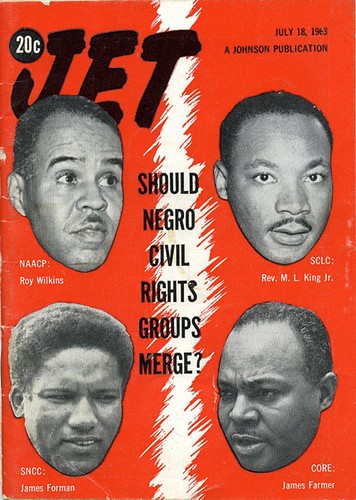
Jet, 1951
A sister publication to Ebony, this weekly news and culture magazine is credited for igniting the civil rights movement, when, in 1955, it published David Jackson’s photographs of 14-year-old Emmett Till’s mutilated body following his lynching by white men in Mississippi. The photos, published in African-American publications around the country but not in mainstream publications until decades later, outraged African-Americans.
Essence, 1970
A monthly lifestyle magazine targeting a Black female audience. Its Essence Music Festival is among the largest annual gatherings of Black musical talent. Its owner, The Hollingsworth Group (later changed to Essence Communications), was one of the largest Black-owned companies in the U.S. in the 1970s. The company was later sold to Time Inc., but as of 2018 Essence is again a fully Black-owned publication.
Related Reading
Nieman Reports Spring 2015 issue on Race and Reporting
The news industry has been talking about diversity for decades, but that talk has not always been followed by action. In this Nieman Reports cover package, reporters and editors discuss strategies for creating more inclusive newsrooms and how racially diverse staffs can improve coverage.
